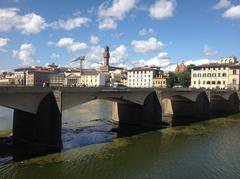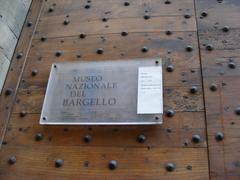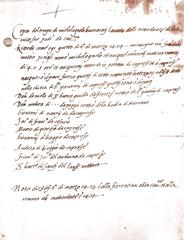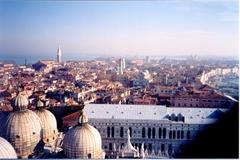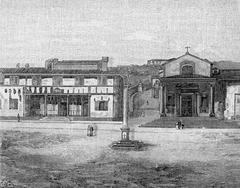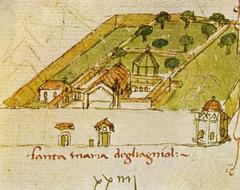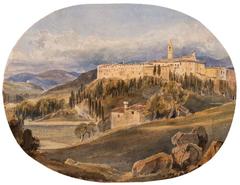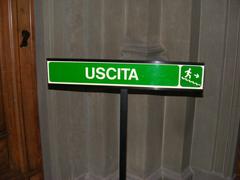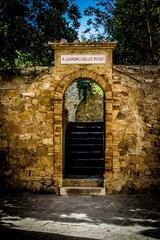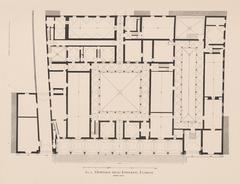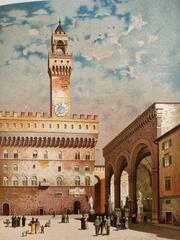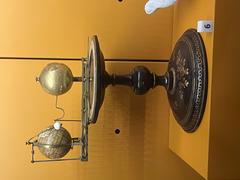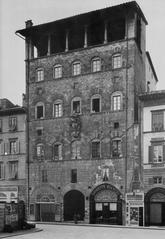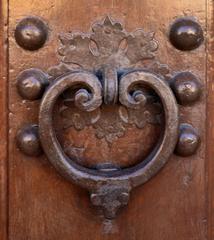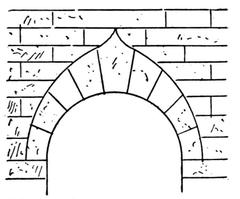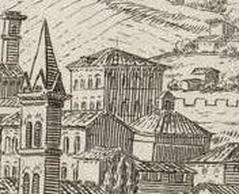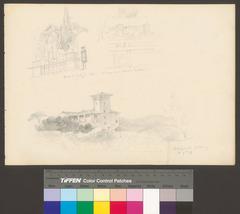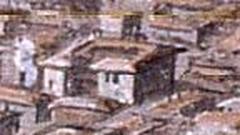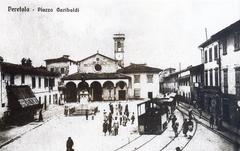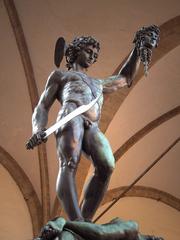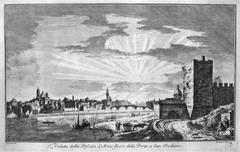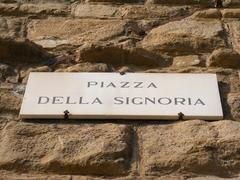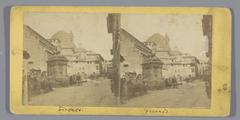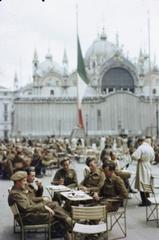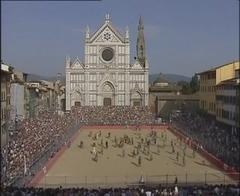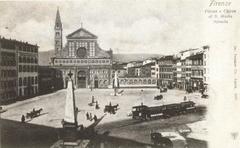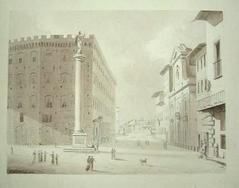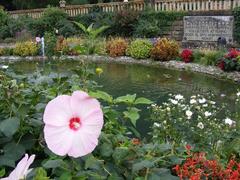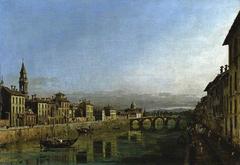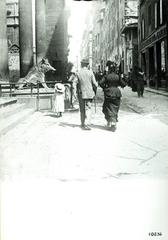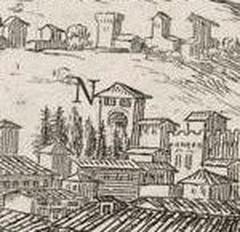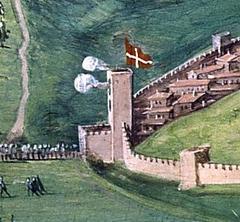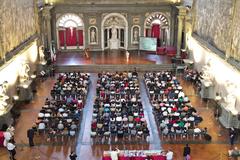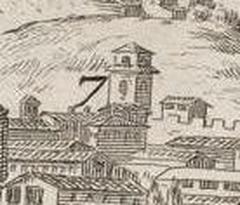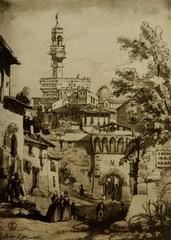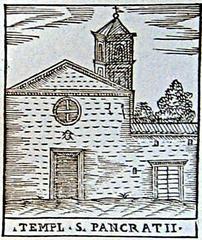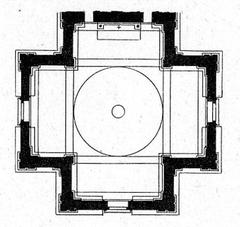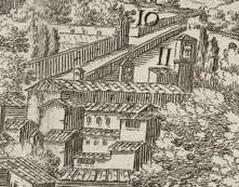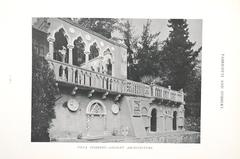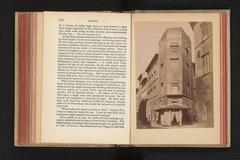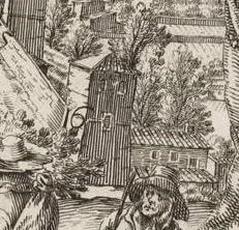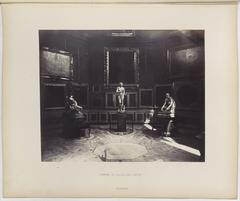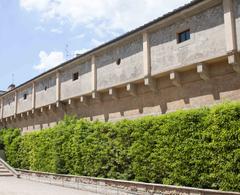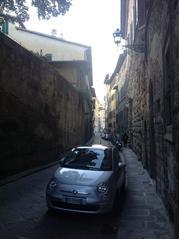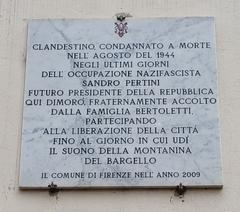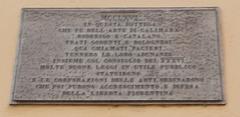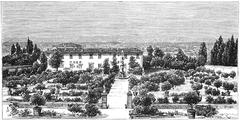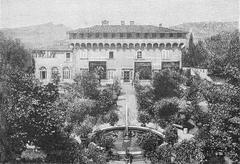
Ponte alle Grazie Visiting Guide
Date: 18/07/2024
Why Visit Ponte alle Grazie?
Welcome to an exploration of one of Florence’s most iconic landmarks, the Ponte alle Grazie. This guide offers a deep dive into the rich history, architectural evolution, and cultural significance of this ancient bridge, as well as practical tips for visitors. Originally built in 1227, the Ponte alle Grazie is not only one of the oldest bridges in Florence but also one of the most storied. Known initially as Ponte di Rubaconte, it played a vital role in connecting the Oltrarno district with the city center, facilitating trade and communication across the Arno River. Over the centuries, it has witnessed numerous transformations, from medieval hubbub and Renaissance modifications to its dramatic destruction during World War II and subsequent modern reconstruction (Florence Inferno, Visit Florence). Today, the bridge stands as a testament to Florence’s ability to blend history with modernity, offering stunning views and a touch of historical charm to all who visit. Whether you’re a history buff, a tourist planning your next trip, or simply curious about Florence’s historical sites, this comprehensive guide has something for you.
What You’ll Find in This Guide
- Introduction
- Early Beginnings
- Medieval Significance
- Renaissance Transformations
- Destruction and Reconstruction
- Modern-Day Significance
- Architectural Features
- Cultural Impact
- Preservation Efforts
- Visitor Experience
- Visiting Hours
- Tickets
- Nearby Attractions
- Accessibility
- Special Events
- Guided Tours
- Photographic Spots
- FAQ
- Conclusion
Introduction
Welcome to an exploration of one of Florence’s most iconic landmarks, the Ponte alle Grazie. This article delves into the rich history of this ancient bridge, its architectural transformations, cultural significance, and practical tips for visitors. Whether you’re a history buff, a tourist planning your next trip, or simply curious about Florence’s historical sites, this guide has something for you.
Early Beginnings
The Ponte alle Grazie, one of Florence’s oldest bridges, has a rich history dating back to the 13th century. Originally constructed in 1227, it was known as Ponte di Rubaconte, named after Rubaconte da Mandello, the podestà (chief magistrate) of Florence at the time. The bridge was built to connect the Oltrarno district with the city center, facilitating trade and communication across the Arno River. The original structure was composed of nine arches, making it one of the longest bridges in Florence (Florence Inferno).
Medieval Significance
During the medieval period, the Ponte alle Grazie played a crucial role in the daily life of Florentines. It was not just a passageway but also a bustling hub of activity. The bridge was lined with houses, shops, and even a chapel dedicated to Saint Michael. These structures were built directly on the bridge, a common practice in medieval Europe, which turned the bridge into a vibrant community space (Visit Florence).
Renaissance Transformations
The Renaissance era brought significant changes to the Ponte alle Grazie. In 1345, the bridge was damaged by a severe flood, leading to extensive repairs and modifications. The most notable change came in 1445 when the bridge was renamed Ponte alle Grazie after a nearby monastery, the Monastery of the Graces. This period also saw the addition of several religious statues and shrines, enhancing the bridge’s spiritual significance (Florence Web Guide).
Destruction and Reconstruction
The Ponte alle Grazie faced its most challenging period during World War II. In 1944, retreating German forces destroyed the bridge to hinder the advancing Allied troops. This act of war left the bridge in ruins, and it remained so until the post-war reconstruction efforts began. The current structure, completed in 1953, was designed by architect Ettore Fagiuoli. Unlike its medieval predecessor, the new bridge features a modern design with five arches, reflecting the architectural trends of the mid-20th century (The Florentine).
Modern-Day Significance
Today, the Ponte alle Grazie stands as a testament to Florence’s resilience and ability to blend history with modernity. While the bridge no longer hosts the bustling community of medieval times, it remains a vital part of the city’s infrastructure and a popular spot for both locals and tourists. The bridge offers stunning views of the Arno River and the surrounding landmarks, making it a favorite location for photographers and history enthusiasts alike (Florence Tips).
Architectural Features
The modern Ponte alle Grazie, with its five arches, is a departure from the original nine-arched medieval structure. The design by Ettore Fagiuoli incorporates elements of both functionality and aesthetics. The bridge is constructed from reinforced concrete, a material choice that ensures durability while allowing for a sleek, minimalist appearance. This design choice reflects the post-war architectural trends that favored simplicity and practicality (ArchDaily).
Cultural Impact
The Ponte alle Grazie has been immortalized in various works of art and literature over the centuries. Its picturesque setting and historical significance have made it a subject of interest for artists, writers, and historians. The bridge has been featured in numerous paintings, capturing its evolution through different historical periods. Additionally, it has been mentioned in literary works that explore the rich cultural tapestry of Florence (Florence Art Guide).
Preservation Efforts
Preserving the Ponte alle Grazie has been a priority for the city of Florence. Regular maintenance and restoration projects ensure that the bridge remains in good condition and continues to serve as a historical landmark. These efforts are crucial in maintaining the bridge’s structural integrity and historical authenticity. The city collaborates with various cultural and historical organizations to fund and oversee these preservation initiatives (Florence Heritage).
Visitor Experience
For visitors, the Ponte alle Grazie offers a unique blend of historical insight and scenic beauty. Walking across the bridge provides a sense of connection to Florence’s past, while the views of the Arno River and the city’s skyline are truly breathtaking. The bridge is easily accessible and is located near several other major attractions, making it a convenient stop on any tour of Florence. Informational plaques and guided tours are available to enhance the visitor experience, providing context and historical background (Florence Tourism).
Practical Information
- Visiting Hours: The Ponte alle Grazie is accessible 24/7, but the best time to visit is during daylight hours for optimal views and safety.
- Tickets: There is no admission fee to walk across the bridge.
- Nearby Attractions: The Uffizi Gallery, Palazzo Vecchio, and the Boboli Gardens are all within walking distance.
- Accessibility: The bridge is wheelchair accessible, with smooth pathways suitable for all visitors.
- Special Events: Keep an eye out for local festivals and art exhibitions that occasionally take place on or near the bridge.
- Guided Tours: Consider booking a guided tour to gain deeper insights into the bridge’s history and significance.
- Photographic Spots: The best spots for photography are from the riverbanks and from the middle of the bridge, offering panoramic views of the Arno River and the Florence skyline.
FAQ
- What are the visiting hours for Ponte alle Grazie? The bridge is open 24/7, but daytime visits are recommended.
- How much are tickets for Ponte alle Grazie? There is no admission fee to visit the bridge.
- Is the bridge accessible? Yes, the Ponte alle Grazie is accessible to visitors with disabilities.
Conclusion
The history of the Ponte alle Grazie is a microcosm of Florence’s broader historical narrative. From its medieval origins to its modern-day incarnation, the bridge has witnessed and withstood the test of time. Its story is one of resilience, adaptation, and cultural significance, making it an essential part of any comprehensive guide to visiting Florence. Don’t forget to explore nearby attractions and take in the stunning views, ensuring your visit to Ponte alle Grazie is both informative and memorable.
For more updates and information on Florence’s historical sites, follow us on social media and check out our related posts. Happy exploring!
Summary and Final Thoughts
The Ponte alle Grazie embodies the resilience and rich history of Florence, making it a must-visit landmark for anyone exploring the city. From its medieval origins and Renaissance transformations to its modern-day significance, the bridge tells a story of adaptation and cultural importance. Despite being destroyed during World War II, its reconstruction in the mid-20th century symbolizes Florence’s enduring spirit and ability to blend the old with the new (The Florentine). As you walk across the bridge, you can enjoy breathtaking views of the Arno River and the Florence skyline, making it a favorite spot for both locals and tourists alike. The Ponte alle Grazie is not just a passageway but a historical landmark that continues to capture the imagination of artists, writers, and visitors (Florence Art Guide). For an enriching experience, consider taking a guided tour to gain deeper insights into its history and significance. And don’t forget to explore nearby attractions and take in the stunning views, ensuring your visit to Ponte alle Grazie is both informative and memorable. For more updates and information on Florence’s historical sites, follow us on social media and check out our related posts.
References
- Florence Inferno. (n.d.). Discover the History and Visiting Tips for Ponte alle Grazie in Florence. Retrieved from https://www.florenceinferno.com/ponte-alle-grazie/
- Visit Florence. (n.d.). Ponte alle Grazie. Retrieved from https://www.visitflorence.com/florence-monuments/ponte-alle-grazie.html
- The Florentine. (2020). Ponte alle Grazie: A History. Retrieved from https://www.theflorentine.net/2020/04/20/ponte-alle-grazie-history/
- Florence Art Guide. (n.d.). Ponte alle Grazie. Retrieved from https://www.florenceartguide.com/ponte-alle-grazie


